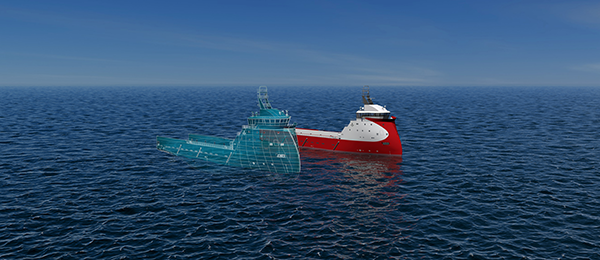The data path to safer, cleaner and leaner shipping
Today’s shipping industry is a complex sphere characterised by fierce competition, economic uncertainties, comprehensive regulations as well as a rapidly growing amount of technology solutions that could help players enhance their business. The environment in which ship managers operate cannot be altered, but there are ways to make the best out of approaching challenges.
The fleet of the future will be continually communicating with its managers and perhaps even with a ‘traffic control’ system that is continually monitoring vessel positions, maneuvers and speeds.
Fleet managers will be able to analyse this data, enabling them to advise the captain and crew on navigation, weather patterns, fuel consumption, and port arrival. This will help reduce the risk of accidents caused by human error, increase cost efficiency and improve environmental performance.
Some of this data will also be shared.
Ports will use the data to help plan and optimise loading and unloading. Class societies will analyse the data to check the status of machinery and hull, letting owners and operators know when a survey is required based on the condition of the systems, helping them reduce downtime and avoid unnecessary maintenance.
“The potential for smarter use of data in our industries is enormous,” said Knut Ørbeck-Nilssen, CEO DNV GL – Maritime. “For (us) as a classification society, it is vital to always be exploring ways we can help our industry to leverage new technologies to improve the safety and productivity of their assets. Today that means being out in front of digitalisation and the vast amount of data being produced and gathered on vessels by advanced sensor technology and interconnected systems.”
DNV GL’s recently launched industry data platform, Veracity, enables connections between multiple stakeholders and data sets, to create unique solutions. Customers can integrate, secure and quality assure their data, and then offer controlled access to DNV GL or other providers to run analytics on the data.
Individual data sets can be enriched with other, industry wide data sets, providing benchmarks, new and deeper insights and analytics.
One area in which the maritime industry can exploit the platform is to allow industry players to document compliance of main onboard machinery and systems through predictive analytics, removing the need for calendar-based inspections.
For example, in a pilot project, a drilling operator embarked on a project to explore predictive analytics with a components vendor and an analytics services company. Working with DNV GL to determine if that approach would gain class approval, an analysis of the data revealed severe quality problems that none of the partners was previously aware of. Once the data was quality assured, machine learning algorithms were successfully applied to the data.
DNV GL, which is exploring new territory in data mining, sees multiple possibilities for combining and creating new data sets, such as predicting onboard equipment failures.
Users of the My DNV GL portal can access the society’s digital services, exclusive information, an overview of certificates and reports, download survey preparation notes, manage ISM audits, receive automatic alerts and class status reports and order surveys and audits, all while having full control of which users can access what data from the portal and having access to all their vessel data.
The society is continually adding to ways to use data and IT to service customers, including digital certificates to ease port processes, a survey booking system that uses predictive vessel tracking to give guidance on the most beneficial ports for minimal disturbance to operations and an automatic positioning system being developed with the German Aeronautical Institute.
With this growing inter-connection, ships and mobile offshore units are becoming increasingly reliant on software-dependent systems which means that cyber security emerges as a key to controlling operational and safety risks. Maintaining the integrity and resilience of critical cyber-physical systems therefore requires a holistic approach to both safety and security.
DNV GL expects increased demand in the next few years for such critical support as the industry gains awareness of the vulnerabilities and related cyber threats to their businesses.
DNV GL is moving ahead into a digitalised future. Pending innovations include IRIS – a camera and tracking system for inspectors or surveyors working inside tanks which can be used to automatically link the surveyor’s photos with a 3D model of the vessel – and COSSMOS, a tool which can simulate and optimise complex and integrated ship machinery systems.
“Creating data-smart shipping to leverage and capitalise on opportunities today and in the future is a key part of DNV GL’s strategy – for us and for our customers. It’s not only about generating new, big sets of data, but about using and managing already available data in a smart way,” said Ørbeck-Nilssen.

Digital twins CREDIT: DNV GL
DNV GL’s digital twin concept takes all the information available about a ship to create an exact digital copy, then uses this model to simulate the behavior of the ship and its systems.

